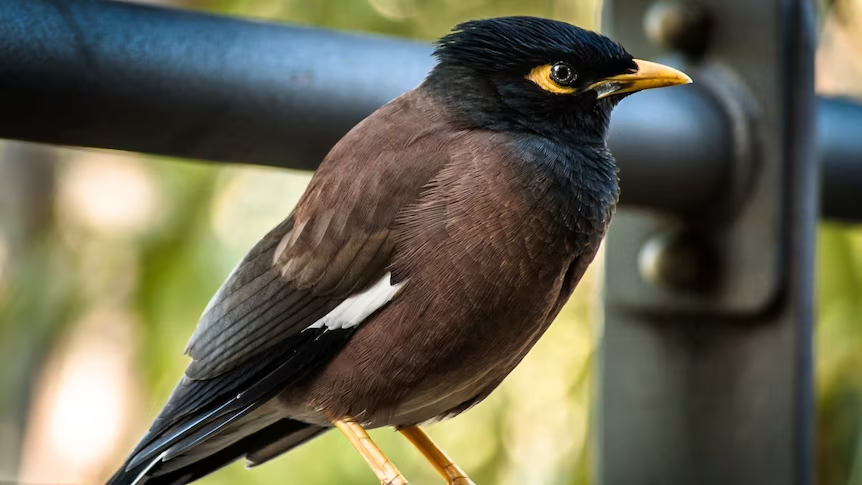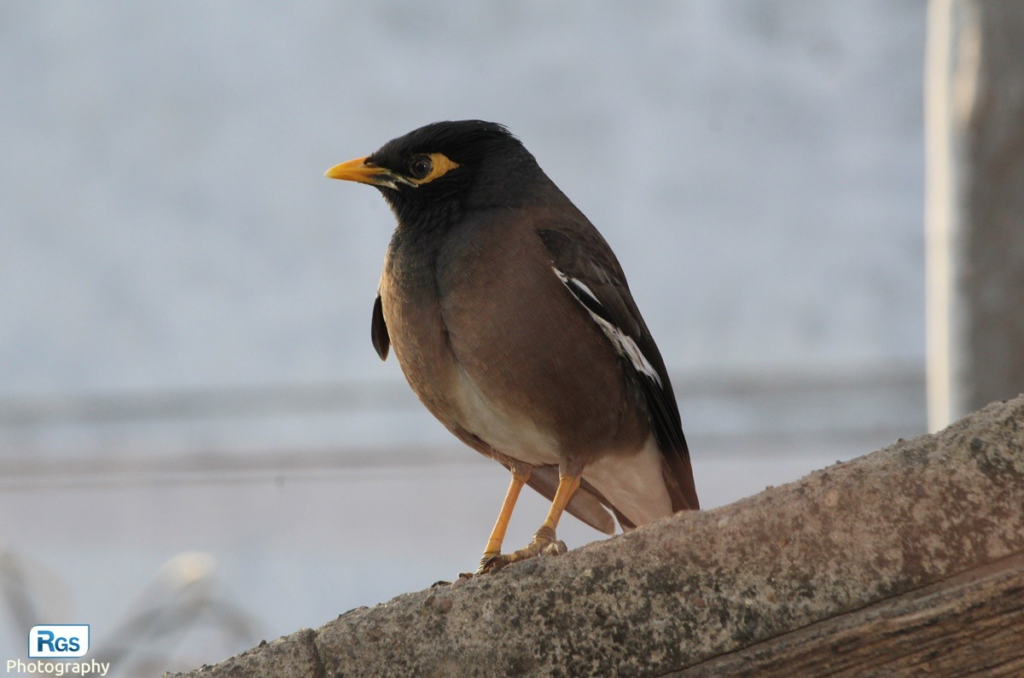More invasive myna birds captured across various regions of Qatar has become a major topic for environmentalists and residents alike. Over the past few months, the number of invasive common mynas, also known as Acridotheres tristis, has significantly increased, prompting authorities to take swift action.
Wildlife departments and environmental authorities have tamped up their bird control efforts. The capture of more invasive myna birds in public parks, residential areas, and even in school zones is now a regular operation. With a reported 300% rise in myna bird population, concerns are growing about the potential damage these birds may cause to the ecosystem.
What Are Myna Birds and Why Are They a Threat?
Myna birds are originally native to South Asia, but their adaptability and aggressive nature have made them one of the most invasive bird species in the world. Qatar, like many Gulf countries, has seen a sharp rise in these birds due to rapid urban development and a favourable environment for breeding.
The danger lies not only in their growing population but also in their behaviour. Myna birds are territorial and known for attacking native bird species, taking over nests, and competing for food. In some cases, they are even seen attacking small mammals and reptiles. Hence, the news of more invasive myna birds captured is being welcomed by conservationists, who fear ecological imbalance.

1200 Birds Captured in June Alone
According to official reports, more than 1200 myna birds were captured in June 2025, which is triple the number recorded during the same time last year. Authorities have increased surveillance and installed bird traps in 16 different zones of the country. These include popular locations such as Doha Corniche, Aspire Park, and areas in Al Wakrah and Al Rayyan.
Speaking to local media, a representative from the Department of Wildlife Conservation said, “This sudden rise in the myna bird population was unexpected. We had to intensify operations after receiving complaints from residents about aggressive bird behaviour and loud screeching noises disturbing the peace.”
Impact on Local Bird Species
The common myna bird’s presence has deeply affected the native bird population of Qatar. Species such as the white-eared bulbul and house sparrow are now less visible in urban environments. Myna birds often invade nests and destroy eggs, further reducing the population of local birds.
Experts say this is a long-term ecological risk. If the number of myna birds is not controlled, it could permanently disrupt Qatar’s biodiversity. This is why more invasive myna birds captured by local authorities is not just a response it’s a necessity.
Health and Sanitation Concerns
Apart from ecological damage, myna birds pose health risks too. They are known to scavenge in waste bins and leave droppings in high-traffic public spaces, creating sanitation problems. Residents have also reported damage to property caused by bird pecking, especially on AC vents and roof fixtures.
In schools and hospitals, there have been multiple reports of birds entering buildings, causing panic among children and patients. These incidents further support the campaign for ensuring more invasive myna birds captured and relocated away from densely populated areas.

What Is Being Done?
To combat this growing threat, Qatar’s Ministry of Environment has launched a nationwide awareness campaign. Posters and online content educate the public on how to report sightings of large myna colonies. The government has also tied up with pest control agencies to manage bird populations in both residential and commercial zones.
A mobile app is also being developed, which will allow citizens to report locations where myna birds are gathering. Authorities believe this real-time data will help them act faster and more efficiently.
Meanwhile, special traps that do not harm the birds are being deployed. The captured birds are then relocated to isolated areas or handed over to wildlife agencies for further study.
International Recognition and Support
Qatar’s efforts to control the spread of invasive birds have caught the attention of international wildlife groups. The World Invasive Species Council recently commended Qatar’s strategy as one of the more organised responses in the Gulf region. They emphasised that capturing more invasive myna birds is only part of the solution the long-term goal should be to prevent them from breeding.
Future Plans and Prevention
Qatar aims to reduce the myna population by 60% within the next year. This will involve stricter control of food waste, more secured garbage bins, and regulated bird feeding in parks. Developers of new urban areas are also being instructed to include bird-resistant building designs.
Environmental officers are working with schools to create educational programs that will teach children about invasive species and their impact. The idea is to build long-term awareness, not just temporary fixes.
Community Participation Is Key
Authorities are encouraging residents to take part in the mission. By reporting bird colonies, securing waste, and avoiding feeding stray birds, people can actively contribute to solving this problem. Without public cooperation, even the most advanced trapping efforts may fall short.
As the campaign grows, the message is clear: more invasive myna birds captured means more protection for Qatar’s native environment.
Final Thoughts
The rise of myna birds in Qatar is not just an isolated issue it’s a reminder of how quickly an invasive species can upset the natural balance. With 1200+ birds already captured and many more operations planned, Qatar is leading by example in the region.
From conservationists to everyday citizens, everyone has a role to play. The battle is ongoing, but every bird caught is a step toward restoring ecological harmony in Qatar.
Do follow Gulf Magazine on Instagram
Also Read – Agritech Investments and Incubators: 7 Powerful Reasons Dubai Leads



